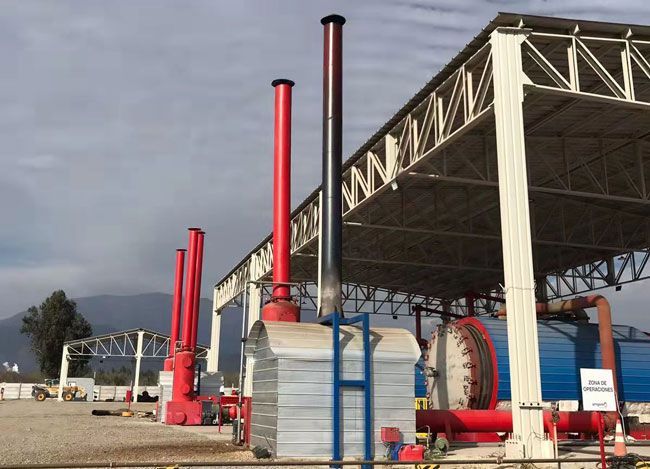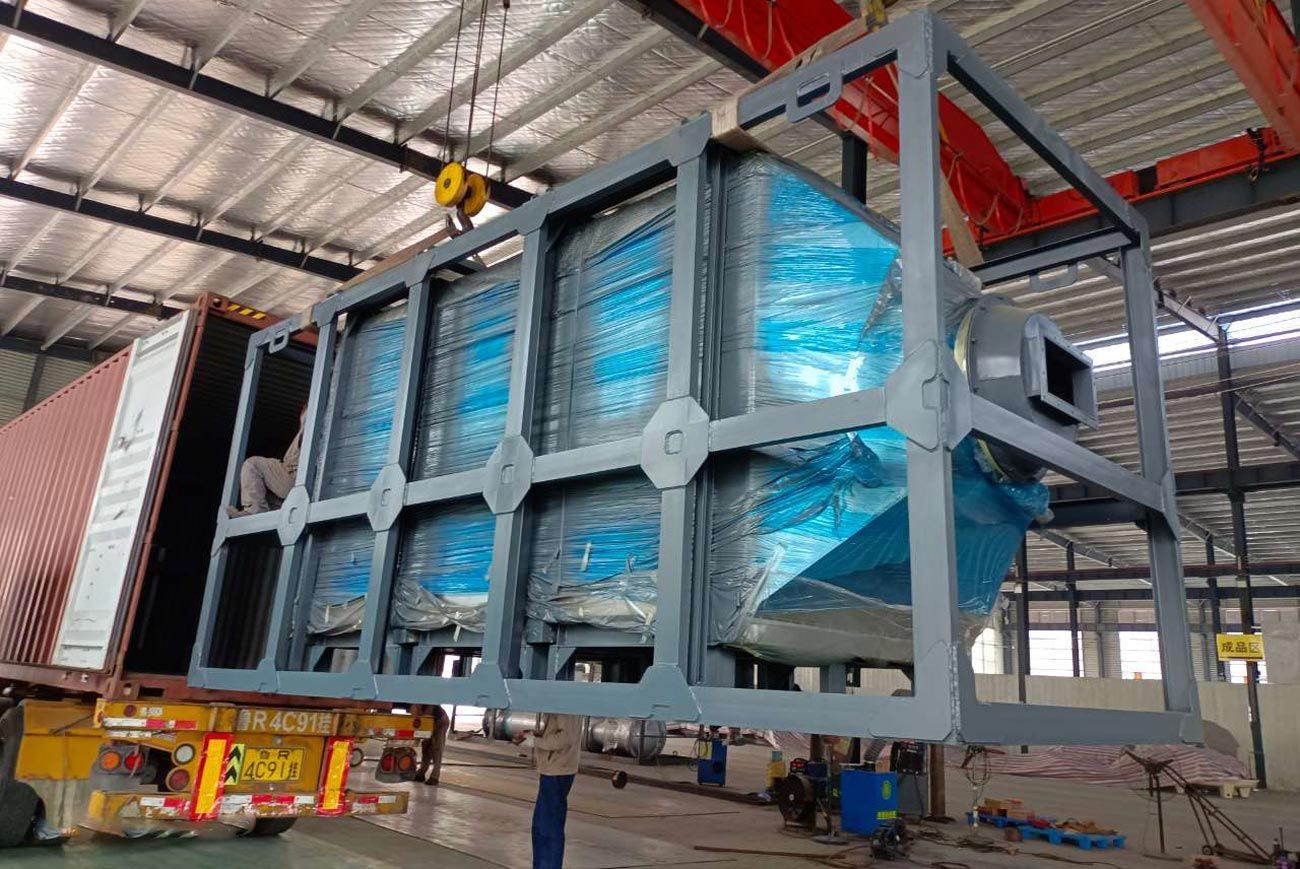Mi blog

A rice hull and husk carbonizer converts rice husks and hulls into charcoal through an environmentally sustainable process. Here's an overview of how it works:
-
Carbonization: The organic matter from rice husks and hulls is converted into char or carbon. This process is accelerated using a high temperature in a rice hull carbonizer.
-
Working procedure: A rice husk charcoal briquettes machine consists of four main parts: carbonization machine/chamber, gasification furnace, cooling chamber, and flue gas purification system.
-
Carbonization furnace: Rice hulls are charred or burnt in this furnace, producing tar, flue gas, and other byproducts.
-
Flue gas purification: A system is used to remove impurities and tar from the gas produced in the furnace, ensuring a purer end product.
-
Combustion and carbonization: The flue gas is sent into the carbonization chamber/machine, where it combusts with the raw materials at high temperatures, converting the rice hulls into char or charcoal. This combustion process relies on the continuous release and utilization of flue gas.
-
Cooling chamber: The charcoal or charred rice hulls are rapidly cooled in this chamber to achieve the desired final product.
The rice hull carbonization process operates in a closed environment, utilizing a circular cycle of combustion and flue gas discharge. This closed and sealed system makes it smoke-free and environmentally friendly compared to other processes.
The rice hull carbonizer produces non-toxic and clean activated charcoal, which is highly sought after as a quality energy source. The increasing demand for activated and clean charcoal products has led to the popularity of these machines.
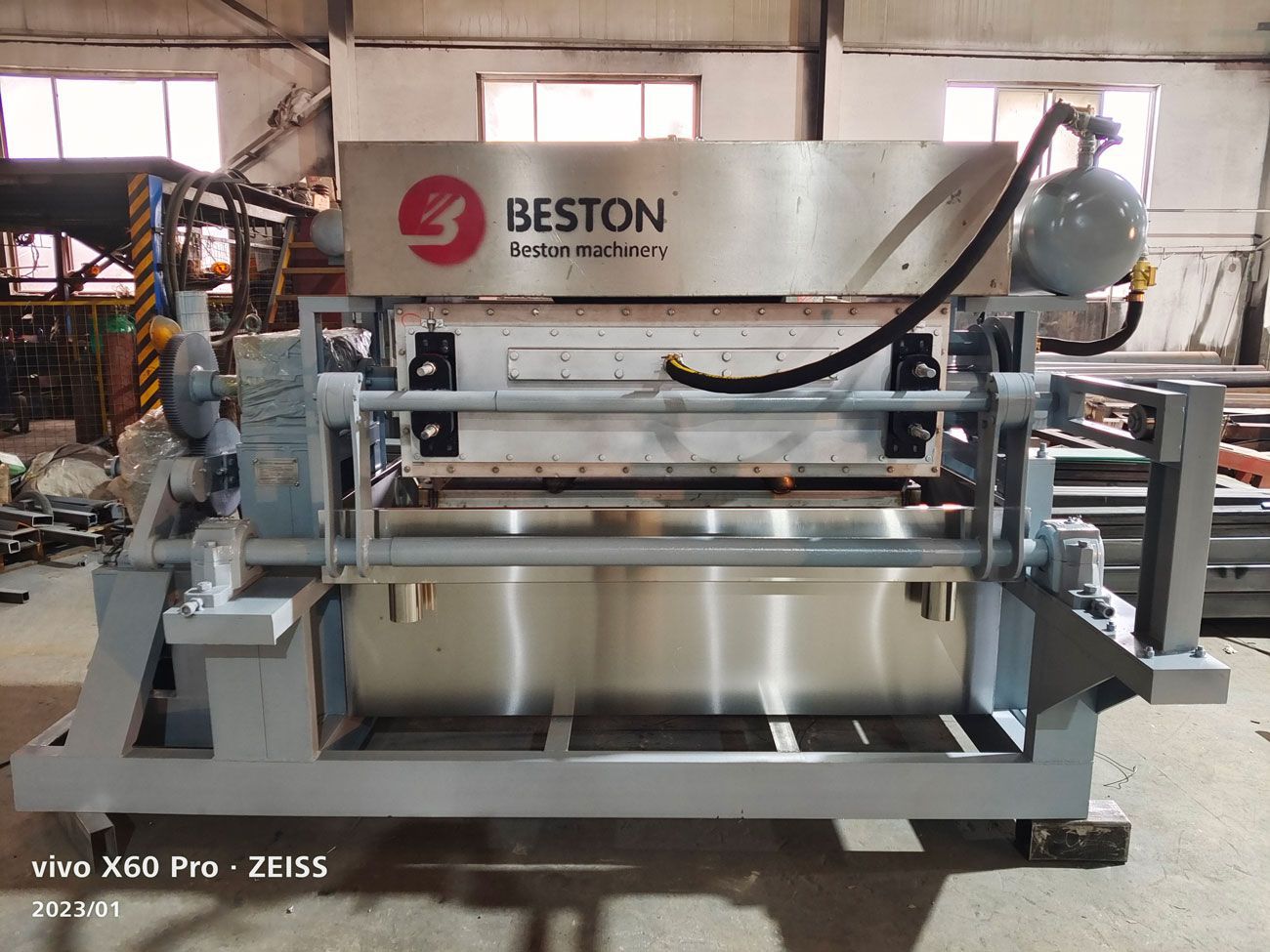
Affordable Operations.
Every investor's dream is to acquire their business operating smoothly without significant setbacks. The paper egg tray making machine is certainly one versatile device with the possibility to improve your profit margin. The product might seem complex but is super friendly. The operations are systematic, thus requiring little practicing for the operator. Furthermore, the fully automatic models will not require manual input simply because they can execute all functions independently. All the versions of the machinery comprises three strategic locations, for example the pulping, molding, and drying systems. Each of the operator has to do is load the raw materials, and the device will execute these functions. In case you are keen, observation is sufficient to understand the process. The manufacturing eliminates any possibility of wastages by any means. Step one pulping employs appropriate numbers of the appropriate raw materials. The outcome is accurate production. The ideal from the category can produce up to a maximum of 12000 pieces of egg trays with a given hour. The long term effect is actually a considerable decrease in the volume of energy consumption. Also, It reduces the labor costs necessary to sustain a lot of employees.
Assortment Of Options.
Another thing that should convince you to choose this machine may be the different choices to take into consideration. The three categories include manual, semi, and fully automatic machines. These work at a comparable goal, making the appropriate products, but through different mechanisms. A manual model is an affordable option but well suited for small-scale investors. Also, its operations are pretty costly when compared to the est. The 2nd type, semi-automatic, includes a better functionality level and will cost you more. The very last option, fully automatic, works independently to satisfy the requirements that you may have. It functions efficiently while beating downtime no matter the needs. Prior to making settlements, it really is imperative to experience a sound understanding of your small business needs. Improper placement of any one of the machines would jeopardize your business.
Eco-Friendly Operations.
Industrial disposal of waste is probably the most significant reasons behind pollution. Wastepaper like old books and newspapers will not decompose hence depleting planet earth of their resources. Making an investment in the paper egg tray making machine is an excellent method to solve this challenge. The device recycles these materials safely and adequately from kinds of products. Customers have also become more aware of the need hence purchasing eco-friendly products. By choosing this product, you stand an opportunity to have numerous clients whilst saving mother earth from pollutants.
Choosing this machine for your company is a method to scale higher heights and get all of your goals.

How You Can Convert Rice Husks Into Charcoal
By using a pyrolysis plant, or even a small pyrolysis machine, it is possible to feed different organic materials into it in order to make charcoal. This is basically the solid byproduct of the whole process of heating rice husks to your quite high temperature. In a chamber in which they are placed, you will see no oxygen, thus preventing the combustion of these materials. Once the process is over, the charcoal could be extracted, and subsequently packaged and sold for the highest bidder. You have got to get yourself a pyrolysis plant in order to do this. For individuals who have a substantial amount of rice husks that usually go to waste, this may be a fantastic solution.
Places To Locate Pyrolysis Plants Available For Purchase
All over the world, there are other companies than before producing pyrolysis machines and plants. The emphasis on recycling different kinds of material, especially organic material, has paved just how of these industrial machines to become created. Prices to them have gone up through the years, but so also provides their capabilities. A number of these machines can process tons of material on any day. If you harvest rice, and you have an abundance of existing rice husks, this is a sure way to convert that waste material into something profitable. To discover these firms, industrial websites often list their goods on sites that showcase industrial machines and plants ( carbonera automatica ) . It is there which you will obtain contact info for these different companies. If they may have rice husk charcoal machinery, you may request an estimate.
Is This A Rewarding Investment?
This is really a good investment for everyone that can access rice husks. Most of the time, men and women either pay money for the disposal in the rice husks, or they will likely simply work them back into the soil. Others may form compost piles to create fertilizer. However, if you want almost immediate gratification for which you actually have, simply obtain a rice husk charcoal machine that can produce this material.
Farmers which do cultivate rice will have tons of rice husks that may not be used properly. If you have several tons of rice husks sitting at the facility, you should think about processing all of them by using a pyrolysis plant. By obtaining quotes from companies that are manufacturing these with a weekly basis, you could have one sent out for your needs quickly by any means. It really is a worthwhile investment that can help you cash in on the harvesting of rice utilizing the rice husks that you are currently always going to make.
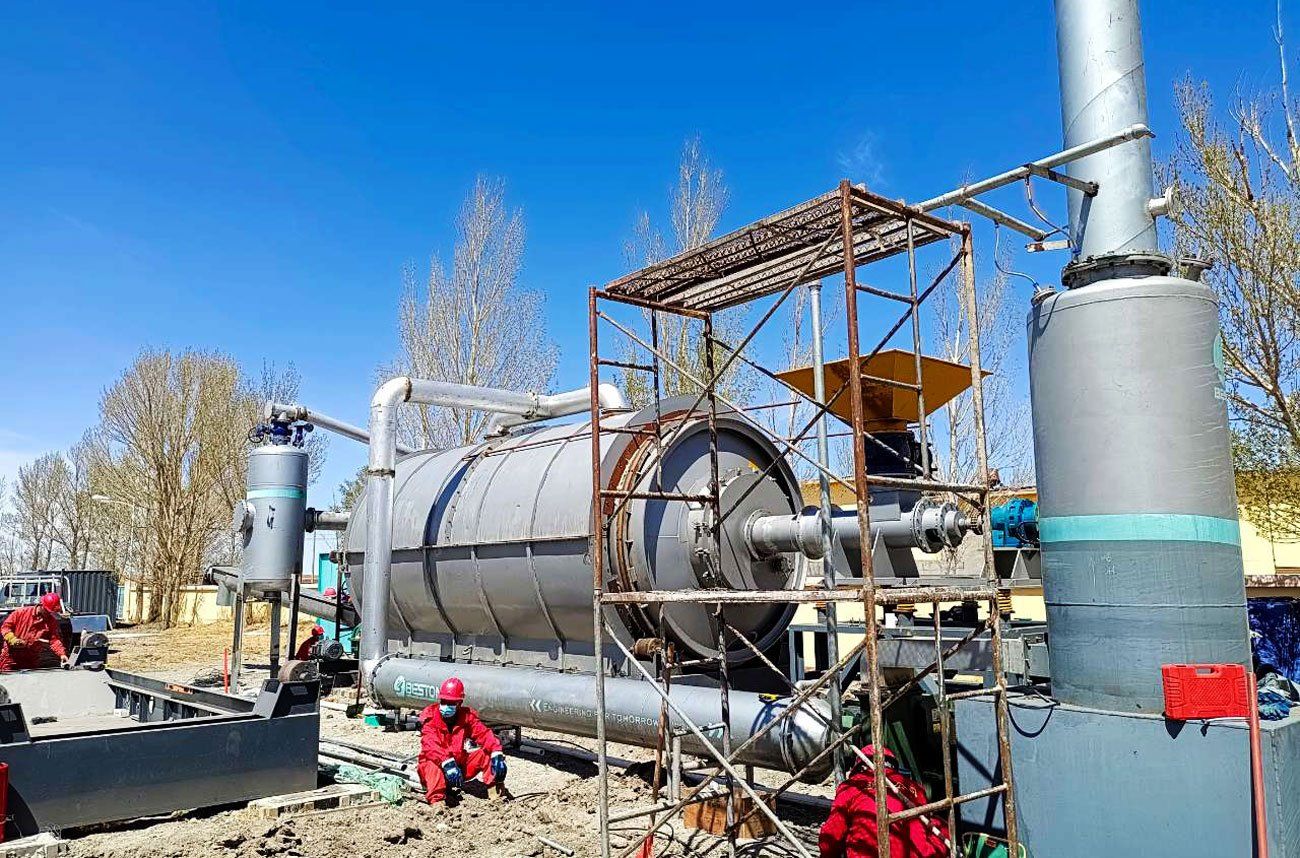
Exactly How Much Does It Cost?
The fee ranges from six figures to seven figures based mostly on the dimensions of the unit and its overall production value. You might not realize how inexpensive these are before you start to look, and how there are numerous companies that could help you save money over some of the others. The location of these companies can vary greatly, differing by a huge number of miles, so you also needs to consider the expense of shipping. Upon having every one of these numbers, and you know somewhat concerning the businesses that produce them, you possibly can make a determination and buy a pyrolysis plant for your business.
Just How Do They Typically Function?
These are designed to work in a very specific manner. For example, the larger materials is going to be chipped up into smaller sizes. This really is necessary before putting it into the pyrolysis reactor. It is actually throughout the reactor that oxygen is taken off, and this chamber is sealed, so high temperatures is possible inside. The chemical procedure that occurs with the roll-out of heat is the thing that fails the types of materials into solid and liquid components. These are generally very useful for businesses that are performing huge amounts of harvesting or that actually work with rubber tires and plastic bottles.
Should You Have A Pyrolysis Plant Or Machine?
A pyrolysis machine will be smaller. Also, they are considerably more affordable. You possibly will not realize how easy it is to look for the companies that produce them. It is due to the buzz of the plants and machines that take advantage of the pyrolysis process. Eventually, it will be possible to select one of these brilliant companies, some of which will be in close proximity to where you are. As long as the company is acknowledged for creating the most beneficial pyrolysis plants, you can purchase one and begin using it on your own.
Pyrolysis plants are extremely an easy task to operate. They can take a tiny amount of time to put together, as well as to test, but when fully operational can present you with benefits. Instead of discarding materials that you just would either sell, burn or perhaps bury in the earth, you are able to instead start using these plants to convert them into something usable. Simply find a business that can provide an exceptional deal on a single with their latest pyrolysis plants to start. It will probably be a good investment that covers itself very rapidly due to the form of materials that it could process.
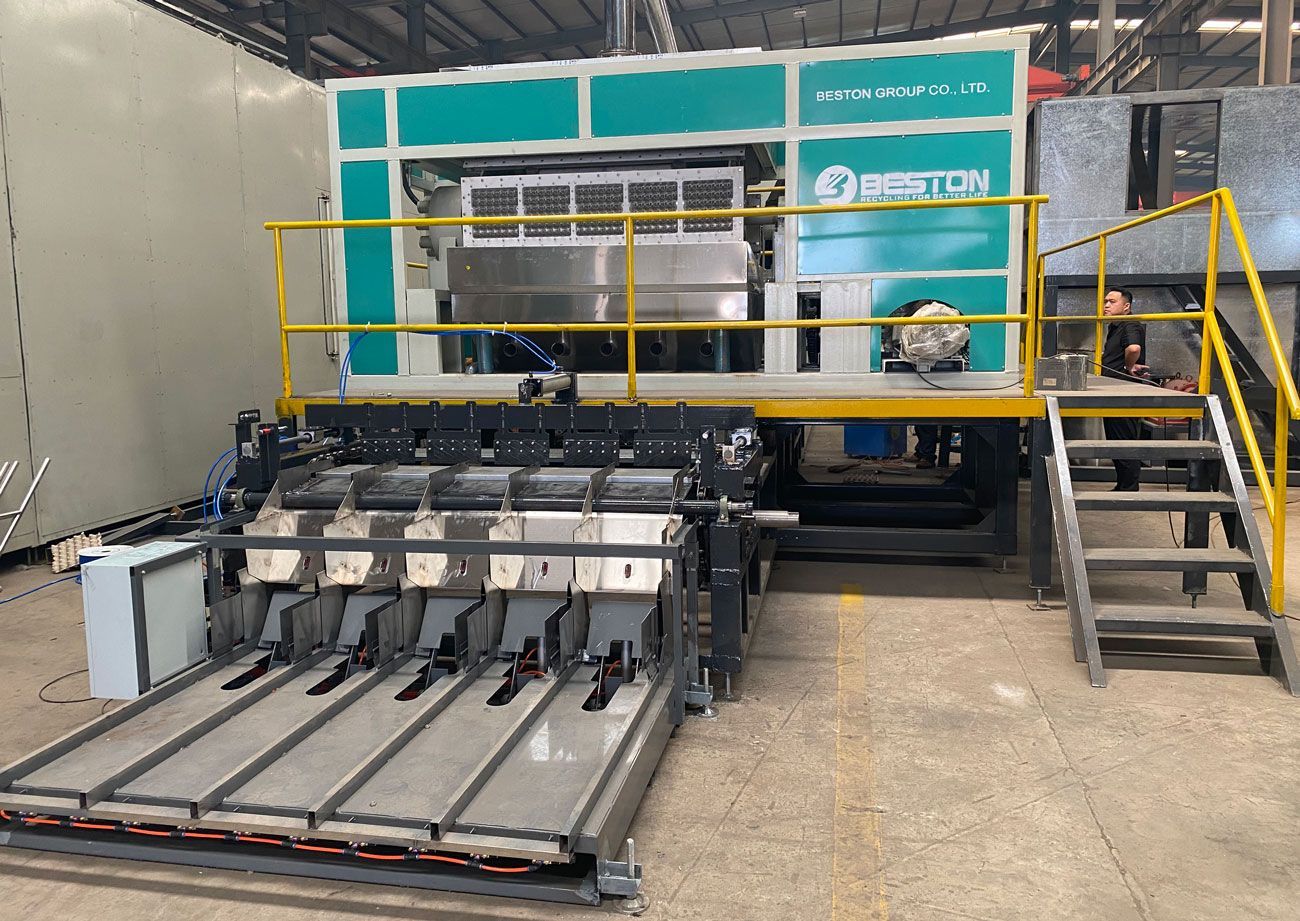
Contact Companies That You Are Currently Informed About
The initial step would be to go are you going to are familiar. Maybe you have purchased egg tray making machines from different companies before. You can expect to contact them, speaking directly with these companies, to view simply how much it is going to cost. The estimates they provide will allow you to turn this decision. This enables you to create a choice quickly. However, if you are unfamiliar with the industry, or you do not understand about these manufacturers, you should select a business from the ones that can be found. See this fully automatic egg tray machine .
Search For Industrial Machine Companies On The Web
A number of these businesses that produce egg tray machines are industrial in general. They will likely likely produce various sorts of industrial machines, most of which will be really expensive. The cost is generally influenced by what amount of cash you will be spending. You may even ought to look at the capabilities of each one of the machines. Finally, the estimates are able to offer a birds eye take a look at their production capabilities along with the prices for every single one.
How You Can Secure The Best Prices
The lowest possible prices can be obtained from firms that can produce them at a discount. They might also have models which they developed in the past they may have not managed to market. Automatic egg tray machines are incredibly necessary in the world of farming, but that does not mean that you need to buy locally. Overseas businesses tend to have the best prices upon them, allowing you to reduce costs despite the expense of shipping. When you get estimates from these companies, this information will be included. This will enable you to secure the lowest possible price on these egg tray machines that are fully automated.
When you choose to buy automatic egg tray making machines, consider every one of these factors. Start looking for these businesses that produce them regularly and request info on these. You may well be happily surprised from the low cost of a number of the machines, especially the automated versions. The more that they can automate the whole process of creating egg trays, the faster it will be easy to create them. Most of these tips will cause you to inexpensive and fully automated egg tray machines that exist entry to within a couple weeks which means your business can increase production levels.
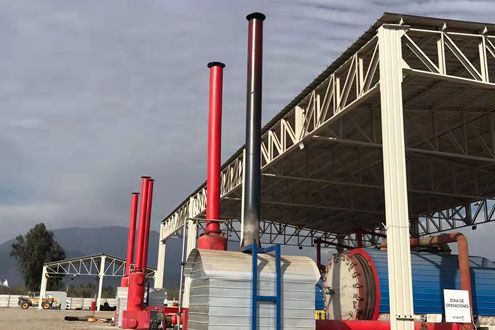
Tire Waste Is Continually Being Produced
People around the world rely on cars in order to get in one location to another. The tires on a vehicle aren't created to last forever, so that as a vehicle is driven a growing number of, those tires will degrade until they eventually must be replaced. In areas that see a lot of snow, ice, and also other adverse weather conditions, tires can wear out more rapidly.
Provided that people keep driving, they are going to still produce tire waste. Because of this there will be easy to access waste material which can be recycled by these machines. Making an investment in this machinery won't just provide short-term benefits. Instead, this machinery holds its value as time goes on.
These Appliances Build A High Value Material
While any type of recycling plant has the potential of profit, the earning capacity of the tire recycling plant is likely to be higher. It is because pyrolysis machinery will be able to produce oil, which is amongst the most high-value substances on earth.
Plants around the world operate on oil that may be produced by recycled tires. Since oil is actually a limited resource, it's becoming increasingly vital that you find new ways to produce oil. The oil that is certainly produced by these machines could be sold in a high price.
Operating Expenses Are Typically Low
Initial costs ought to always be considered when selecting new machinery, but for some types of equipment, there are actually long term costs that ought to be considered too. While there are operating costs to think about before buying a tire recycling plant, you're likely to realize that these costs are very manageable.
The vast majority of pyrolysis equipment on the market today is designed specifically to get energy efficient. On top of that, this equipment usually does not require extensive maintenance. Minimizing your long-term costs will help you to maximize your profits down the road.
There Are Numerous Possibilities
Another significant benefit of choosing to purchase pyrolysis machinery are all the different options on the market. Whether you end up picking a tiny pyrolysis plant or decide to purchase large scale equipment, you'll be able to find equipment that may do precisely what you need it to accomplish.
Having numerous options does mean that you'll be capable of consider equipment at a selection of price points. You'll be able to hunt for inexpensive options, and in case you have a strict budget, you'll manage to find machinery which fits your life-style without needing to compromise on what you need.
Could it be worthwhile to buy a tire recycling machine? If you're thinking about buying new machinery, pyrolysis equipment is a great option. It is a inexpensive type of machinery that may very well be profitable on a shorter and long term basis.
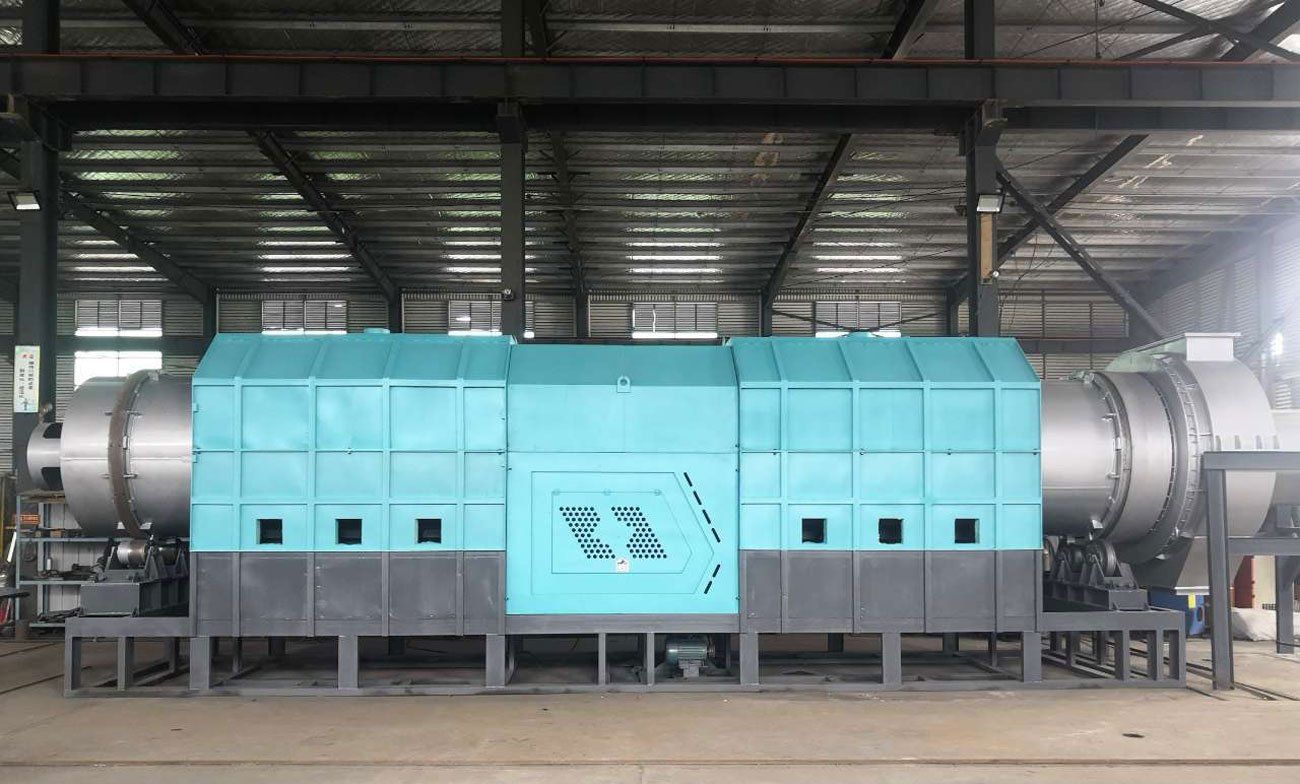
Exactly What Are These Machines Employed For
Also called a biomass pyrolysis plant, they are units that are equipped for the express function of converting biomass into biochar. As you may assess them, you are going to look at the working method, capacity, as well as the different types of raw material which will be usable. In case you are responsible for an organization that makes industrial or municipal sludge, that may be converted effortlessly into biochar by using these products. You should also have the ability to apply it for bamboo, coconut shells, and sawdust that your particular company producing on a regular basis. The outcome is solid fuel that you can burn yourself or target others for business.
Where To Find Available Biochar Production Equipment
There are a number of businesses that specialize in this industry. These are likely producing many pyrolysis machines and plants that happen to be sold worldwide. While you assess all of them, considering there dimensions, weight, as well as their energy consumption, you will then be able to narrow down one last choices. Additionally, you may want to consider the type of heating materials that you can use. This could include diesel, charcoal, as well as natural gas. The way in which it could be powered can certainly help you reduce costs, all the while producing this product that a great many other manufacturers will need.
Getting This Equipment Quickly
If you want to buy this equipment now, you can put your order online, and will also be sent subsequently to your location. How big the equipment, and whether it needs to be assembled once it arrives, are things that you can ask the company before you purchase one. Additionally, you might have a distribution site in your city that is certainly receiving these machines from distant companies. As you contact each one, ask about the delivery time to make sure that yours will arrive as quickly as possible so that you can begin using it. View these machines https://bestonmachinery.com/biochar-pyrolysis-equipment/ .
Regardless of the form of biochar production equipment which you obtain, it is actually all designed to assist you to use waste materials that may be changed into fuel. If it does originate from a business that is renowned for producing among the best in the market, you won't have to worry about whether or not it can work. Additionally, you are likely to save money by contacting many of these businesses and comparing the various products they are offering. Having access to a biochar production machine, of any size, will manage to benefit your small business in a variety of ways by converting waste matter into fuel.
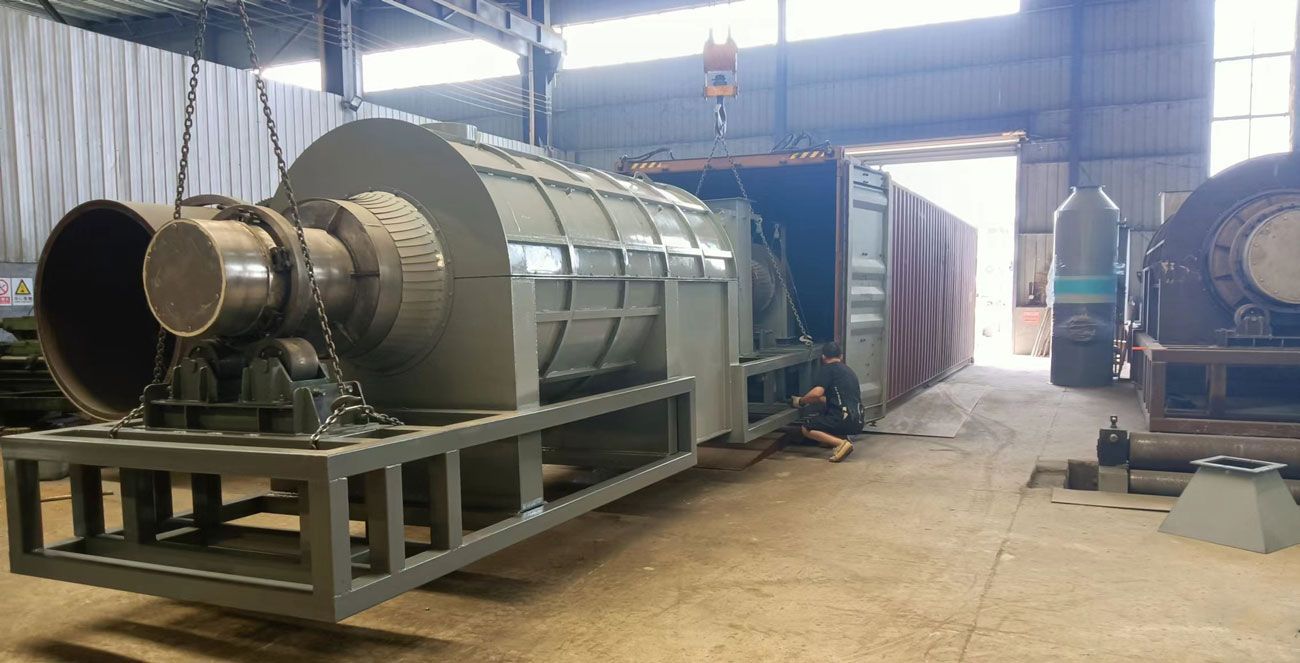
Are These Machines Challenging To Use?
They are quite simple machines to use. They are designed specifically to deal with agricultural waste, which in cases like this are rice husks. Whenever which you harvest rice, you will have a lot of this product, depending upon the dimensions of your small business. A huge crop of rice could be a great source for the material you will have to produce charcoal each day. These are generally also probably the most popular briquettes of charcoal that one could produce and then sell regularly. The machines are designed so that anyone can rely on them. You should not be concerned with the way they function. You simply need to recognize how they work, and in addition how to find the best businesses that produce them.
Things To Consider Before Getting One
You will find three considerations before obtaining one. Firstly, think about the overall efficiency level. A number of these are designed for functioning 24 hours a day. Second, these should have a filtering method for reducing the level of dust which will be produced. Finally, the retail price that you just pay money for these machines ought to be reasonable. This provides you with the capability to pay money for your investment very rapidly. These factors, for example the standing of the organization than means they are, should be thought about before exploring the price tag. The most effective one should be designed to help you convert as numerous rice husks as possible.
How You Can Minimize Your Investment
The amount of money that you simply pay for one of these machines could be minimized very effectively. You need to check out the estimates which are brought to you after you have made your request. A number of these companies can produce them at a discount and will be reflected in the price tag. Many of these companies are located in different countries. Make sure to consider extra fees you will probably have to pay for to have it shipped instantly to you. All this may lead to a lot lower price than you could get with a local supplier.
The harvesting of rice will lead to a huge number of rice husks. When you have been burning this product with regards to adding nutrients towards the soil, you do have another option. Your investment in the rice husk charcoal machine could possibly be your best investments. The one which you choose to not be big enough to fit every one of the rice husks that you are producing. Once it begins to work continuously, you must notice a make money from your efforts with such unique and effective machines.

A rice hull and husk carbonizer converts rice husks and hulls into charcoal through an environmentally sustainable process. Here's an overview of how it works:
-
Carbonization: The organic matter from rice husks and hulls is converted into char or carbon. This process is accelerated using a high temperature in a rice hull carbonizer.
-
Working procedure: A rice husk charcoal briquettes machine consists of four main parts: carbonization machine/chamber, gasification furnace, cooling chamber, and flue gas purification system.
-
Carbonization furnace: Rice hulls are charred or burnt in this furnace, producing tar, flue gas, and other byproducts.
-
Flue gas purification: A system is used to remove impurities and tar from the gas produced in the furnace, ensuring a purer end product.
-
Combustion and carbonization: The flue gas is sent into the carbonization chamber/machine, where it combusts with the raw materials at high temperatures, converting the rice hulls into char or charcoal. This combustion process relies on the continuous release and utilization of flue gas.
-
Cooling chamber: The charcoal or charred rice hulls are rapidly cooled in this chamber to achieve the desired final product.
The rice hull carbonization process operates in a closed environment, utilizing a circular cycle of combustion and flue gas discharge. This closed and sealed system makes it smoke-free and environmentally friendly compared to other processes.
The rice hull carbonizer produces non-toxic and clean activated charcoal, which is highly sought after as a quality energy source. The increasing demand for activated and clean charcoal products has led to the popularity of these machines.

Affordable Operations.
Every investor's dream is to acquire their business operating smoothly without significant setbacks. The paper egg tray making machine is certainly one versatile device with the possibility to improve your profit margin. The product might seem complex but is super friendly. The operations are systematic, thus requiring little practicing for the operator. Furthermore, the fully automatic models will not require manual input simply because they can execute all functions independently. All the versions of the machinery comprises three strategic locations, for example the pulping, molding, and drying systems. Each of the operator has to do is load the raw materials, and the device will execute these functions. In case you are keen, observation is sufficient to understand the process. The manufacturing eliminates any possibility of wastages by any means. Step one pulping employs appropriate numbers of the appropriate raw materials. The outcome is accurate production. The ideal from the category can produce up to a maximum of 12000 pieces of egg trays with a given hour. The long term effect is actually a considerable decrease in the volume of energy consumption. Also, It reduces the labor costs necessary to sustain a lot of employees.
Assortment Of Options.
Another thing that should convince you to choose this machine may be the different choices to take into consideration. The three categories include manual, semi, and fully automatic machines. These work at a comparable goal, making the appropriate products, but through different mechanisms. A manual model is an affordable option but well suited for small-scale investors. Also, its operations are pretty costly when compared to the est. The 2nd type, semi-automatic, includes a better functionality level and will cost you more. The very last option, fully automatic, works independently to satisfy the requirements that you may have. It functions efficiently while beating downtime no matter the needs. Prior to making settlements, it really is imperative to experience a sound understanding of your small business needs. Improper placement of any one of the machines would jeopardize your business.
Eco-Friendly Operations.
Industrial disposal of waste is probably the most significant reasons behind pollution. Wastepaper like old books and newspapers will not decompose hence depleting planet earth of their resources. Making an investment in the paper egg tray making machine is an excellent method to solve this challenge. The device recycles these materials safely and adequately from kinds of products. Customers have also become more aware of the need hence purchasing eco-friendly products. By choosing this product, you stand an opportunity to have numerous clients whilst saving mother earth from pollutants.
Choosing this machine for your company is a method to scale higher heights and get all of your goals.

How You Can Convert Rice Husks Into Charcoal
By using a pyrolysis plant, or even a small pyrolysis machine, it is possible to feed different organic materials into it in order to make charcoal. This is basically the solid byproduct of the whole process of heating rice husks to your quite high temperature. In a chamber in which they are placed, you will see no oxygen, thus preventing the combustion of these materials. Once the process is over, the charcoal could be extracted, and subsequently packaged and sold for the highest bidder. You have got to get yourself a pyrolysis plant in order to do this. For individuals who have a substantial amount of rice husks that usually go to waste, this may be a fantastic solution.
Places To Locate Pyrolysis Plants Available For Purchase
All over the world, there are other companies than before producing pyrolysis machines and plants. The emphasis on recycling different kinds of material, especially organic material, has paved just how of these industrial machines to become created. Prices to them have gone up through the years, but so also provides their capabilities. A number of these machines can process tons of material on any day. If you harvest rice, and you have an abundance of existing rice husks, this is a sure way to convert that waste material into something profitable. To discover these firms, industrial websites often list their goods on sites that showcase industrial machines and plants ( carbonera automatica ) . It is there which you will obtain contact info for these different companies. If they may have rice husk charcoal machinery, you may request an estimate.
Is This A Rewarding Investment?
This is really a good investment for everyone that can access rice husks. Most of the time, men and women either pay money for the disposal in the rice husks, or they will likely simply work them back into the soil. Others may form compost piles to create fertilizer. However, if you want almost immediate gratification for which you actually have, simply obtain a rice husk charcoal machine that can produce this material.
Farmers which do cultivate rice will have tons of rice husks that may not be used properly. If you have several tons of rice husks sitting at the facility, you should think about processing all of them by using a pyrolysis plant. By obtaining quotes from companies that are manufacturing these with a weekly basis, you could have one sent out for your needs quickly by any means. It really is a worthwhile investment that can help you cash in on the harvesting of rice utilizing the rice husks that you are currently always going to make.

